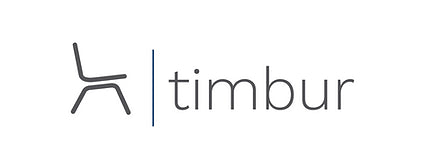Well-designed modern office reception areas bring together several key features to make visitors feel welcome. Smart placement of desks and chairs, looks that match company branding, and new technology work together as basic building blocks. The space needs cozy waiting areas, good lighting, and a clear view of the front desk. Adding useful digital tools and eco-friendly materials makes the area both practical and attractive. Looking at these basic parts helps show what makes today’s reception areas work well.
Key Takeaways
- Modern reception areas integrate digital technology like touchscreen check-in systems while maintaining a clean, minimalist aesthetic appearance.
- Strategic furniture placement combines comfortable seating options with clear walkways to optimize both visitor comfort and traffic flow.
- Lighting design mixes natural daylight with artificial sources to create an inviting atmosphere while enhancing visibility and productivity.
- Brand identity elements, including logos, colors, and custom artwork, are incorporated seamlessly into the overall design scheme.
- The layout balances visual appeal with practical functionality, featuring distinct zones for waiting, conversation, and quiet activities.
Creating a Memorable First Impression
When people walk into a modern office, the front desk area quickly shapes what they think about the company. Studies show it takes just 1/10 of a second for visitors to form their first thoughts, which is why the entrance area needs careful planning.
Good design brings together different parts to make visitors feel welcome and important. Company colors and signs placed around the space help show what the business stands for, while comfy chairs and sofas let people sit and relax.
Soft lighting and quiet music help create a peaceful mood, and touches like plants and clean surfaces keep the space looking neat. Incorporating ergonomic furniture solutions can significantly improve both visitor comfort and receptionist productivity during long workdays. All these pieces work together to create a modern, business-like space that visitors remember even after they leave.

Essential Elements of Modern Reception Layout
The way a reception area is set up shapes how visitors feel and move through the space. A good modern office reception brings together smart furniture layout, useful technology, and sound control to make guests feel welcome while matching the company’s style.
- The reception desk needs to be placed where staff can easily see and talk to visitors, while keeping walkways clear and easy to use.
- Comfortable chairs and sofas that look good and feel nice create useful waiting spaces, with good lighting to mark different areas.
- Today’s reception spaces include screens and places to charge devices, plus materials that reduce noise to keep the space quiet and professional.
When these design pieces work together well, the reception area becomes both practical and attractive, making it work better for everyone who uses it.
Incorporating natural light near waiting areas increases visitor alertness and creates a more inviting atmosphere that reduces stress during wait times.
Strategic Furniture Selection and Placement
Smart furniture choices and setup are key to creating a welcoming front office area.
Today’s reception furniture needs to look good while being useful, with comfortable seating that makes visitors feel at ease without losing its professional appearance.
Choosing the right furniture means picking different types of seating, from tall-backed couches to flexible seating groups that can be moved around, making spaces that work for many kinds of meetings.
The furniture should help control noise levels, and its placement should make it easy for people to walk through the area and spot the reception desk right away.
Each piece should match the company’s style through the right mix of materials, colors, and shapes that fit the business image.
This careful planning creates a space that works well and looks modern at the same time.
Effective cable management solutions for reception area furniture enhance the professional appearance while eliminating potential tripping hazards for visitors.
Lighting Design for Optimal Ambiance
Reception areas need good lighting that works well with both daylight and electric lights to make visitors feel welcome. Good lighting helps people feel more alert and comfortable. Using LED lights saves energy and gives many options for creating a pleasant space.
The best lighting setup has three parts:
· Main lights that brighten the whole area
· Special lights for specific tasks
· Accent lights that make walls and design features stand out
Lights should be placed carefully to help keep noise levels down and avoid echoes. Regular checks and fixes keep the lights working well and looking clean.
When lighting is planned well, it makes reception areas feel warm and modern while being practical and making visitors comfortable. Incorporating bluish light tones during high-focus morning hours can improve visitor alertness and create a more productive first impression.
Incorporating Brand Identity Elements
A reception area works well to show a company’s brand through careful design choices. Today’s office entrances use company colors, logos, and special design features to create a welcoming space that visitors remember. By adding brand elements and specially chosen furniture, companies help visitors feel connected to their business values. Thoughtful selection of eco-friendly materials can enhance both the sustainability and visual appeal of reception areas while reflecting corporate environmental values.
|
Brand Element |
Purpose |
Impact |
Where to Use |
|
Logo Placement |
Easy to Spot |
Quick Recognition |
Walls |
|
Color Scheme |
Matching Look |
Nice Flow |
Furniture & Walls |
|
Custom Artwork |
Company Spirit |
Tells Company Story |
Key Spots |
|
Design Patterns |
Stands Out |
Stays in Mind |
Building Features |
When companies put their brand into their reception area this way, they turn a simple waiting room into a strong message about who they are, making every visitor’s first impression count.
Digital Integration and Visitor Management
Modern technology has changed how front desks work, turning them into smart spaces that make visitor check-in easier and safer.
Today’s front desk systems use simple software that handles guest arrivals, keeps track of who comes and goes, and helps get people out quickly if there’s an emergency.
Digital screens show important company updates and news, helping visitors stay informed and engaged while they wait. Well-placed power outlets and charging spots let guests keep their devices running, which is essential for today’s business visitors.
The check-in system tells staff right away when their visitors arrive and keeps digital records, getting rid of old paper forms.
These new tools have turned old-style reception areas into quick, safe spaces that work well for modern offices while still making visitors feel welcome.
Sustainable and Wellness-Focused Features
Reception areas now show how offices can be both good for people and the planet.
These spaces use plants like Snake Plants and Monstera Deliciosa to create a peaceful setting and clean the air naturally. Large wall gardens make a bold statement while helping visitors feel more relaxed and healthy.
The furniture choices also help protect nature, with many pieces made from reused materials.
Big windows let in plenty of sunlight, working together with low-energy LED lights to make the space bright and welcoming.
All these features work together to create reception areas that care for both people and the environment, matching what modern businesses value today.
Color Psychology and Material Selection
Modern front desk areas combine color effects with carefully chosen materials to make strong first impressions. Using warm colors like red and orange adds energy to spaces, while cool blues and greens help people feel calm. Good materials like wood, leather, and metal show strength and professionalism, while plain colors create a clean base for bright highlights.
- Earth-friendly materials and natural elements, like plants and stone, show care for the environment while helping visitors feel less stressed.
- Picking materials that look good and last long helps show what a company stands for through different textures and quality surfaces.
- Smart use of colors mixes warm and cool shades, with plain backgrounds letting bright accent colors stand out more.
When these pieces work together well, they create front desk areas that both look good and make people feel welcome.
Balancing Aesthetics With Functionality
A well-designed reception area needs to look good while working well for everyone who uses it.
Today’s modern look focuses on simple, clean designs that also make the space easy to use. Smart room layouts help people move around easily and create separate spaces for waiting, talking, and quiet moments.
Comfortable seating looks stylish while keeping visitors relaxed and at ease. New technology like digital sign-in screens and phone charging spots fit neatly into the room’s design.
Good lighting makes a big difference - using both daylight and installed lights creates a warm welcome while keeping the space bright enough for work.
When looks and usefulness come together like this, you get a reception area that truly works.
Frequently Asked Questions
What Items Are Important to Have in the Reception Area?
Key items for a reception area: comfortable chairs and sofas, a friendly front desk, good lighting, nice wall art, company signs and logos, drinks and snacks for guests, plants, and tasteful decorations to make the space feel warm and inviting.
What Does a Reception Area Consist Of?
The main area where guests first enter has comfortable chairs and sofas arranged neatly, clear signs to welcome people, and nice decorations that match well together. Good lighting helps make the space bright and welcoming. Modern equipment like computers and screens make things work smoothly, while carefully chosen colors and easy paths for walking help visitors feel at ease in this business setting.
How Should a Reception Area Be Designed?
The perfect reception area needs a well-planned layout, pleasing colors, comfortable furniture, good lighting, company branding, and the right sound levels. All these parts work together to make visitors feel welcome while keeping the space practical and beautiful.
What Are the Components of Reception?
Basic parts of a reception area include well-placed furniture, matching colors, proper lighting at different levels, signs with company branding, carefully chosen art pieces, comfortable places to sit, and up-to-date technology to help manage visitors smoothly.
Conclusion
Contemporary office reception design goes beyond basic looks, combining style and purpose in modern workspaces. Timbur, with its custom handmade furniture solutions, helps create these welcoming spaces through digital features, eco-friendly materials, and wellness elements. The key is building an area that looks great while working efficiently, making a strong first impression that matches your brand’s story. A well-designed reception area sets the right mood for the entire office while meeting today’s business needs.









